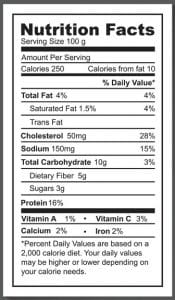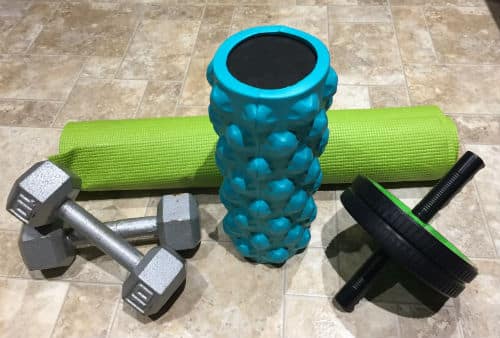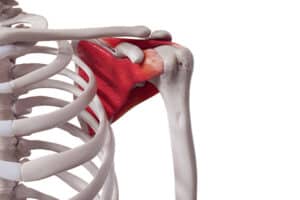What Is Moderation?
Moderation can be defined as the avoidance of excess or extremes. There can be a lot of value in this single word when used in the context of health and well-being. This post will seek to explore various domains of health and how we might better ourselves by applying some degree of moderation to these areas of our lives.
Think about everything that you consumed or did yesterday. Did you eat a lot of high-fat foods, or was your diet mostly balanced? Did you spend hours in front of an electronic screen, or did you decide to do something active? Have you been drinking enough water? What about in the last week? Before reading further, I challenge you to pick apart the last week (or longer) and identify the most prominent things in your life that are going unchecked – that are not being moderated at all, but that you recognize maybe should be.
Moderating Nutrient Consumption

Understanding and “watching” what we eat is an important part of maintaining our health, and is critical in choosing what we should focus on moderating in our diet. While many of us know that over-eating foods loaded with fat, sugar, salt, and various artificial ingredients is not good for us, it is harder to put an actual number to how much we should allow in our diet.
The nutrition fact labels that are available on most packaged items in Canada are a good place to start in forming an understanding of the amounts of different nutrients we should be getting in our diet. For example, if an item says that it has 15 grams of fat per serving, it should say that it contains 23% of our “% daily value” on the label. In other words, if you consume a single serving of that food item, you have consumed 15 grams of the 65 grams for that day that are recommended for you to maintain a healthy diet. I encourage you to read the labels frequently before you buy and consume various items, so you can start to build an idea of what your diet is lacking in, and what is being consumed in excess that should be moderated.
Although the nutrition fact labels can be extremely useful, there are a few things to keep in mind with respect to them:
- Pay attention to what is considered a serving size on the nutrition fact labels rather than making assumptions; some companies might list fives pieces or half of a single food item as a serving size, when a full package contains far more than this.
- The percent daily values are created based on the recommended daily caloric intake of an average-sized individual; people who have much smaller or larger dimensions than average or who engage in lifestyles that may demand more of certain nutrients (eg. a woman who is 5’1” and who runs marathons, a man who is 6’5” and is a muscular body-builder) may need to adjust their daily caloric intake accordingly.
- Some values on the nutrition fact labels are not a recommended daily intake, but rather a safety limit to avoid adverse health conditions. Sodium and cholesterol are two important examples of this. In other words, you should not be trying to meet the percent daily values for these items, as your body is able to thrive on far less.
- Many foods and beverages do not contain nutrient fact labels, such as fresh produce and beverages containing greater than 0.5% alcohol content. Fresh produce is typically composed of mostly carbohydrates, with highly varying amounts of different vitamins and micronutrients. Alcohol is typically just “empty” calories, adding large amounts of calories to your diet but with negligible nutritional value. You will have to do some of your own research on other items.

Once you have created a habit of keeping track of what you are putting into your body, it becomes easier to moderate your diet. For example, if you find that you are consuming 150% of the daily recommended value of carbohydrates in packaged foods alone, and you haven’t even factored in the fresh produce you are consuming, maybe you are lacking in proteins and fats. In another scenario, maybe you are gaining weight steadily, but believe you are eating very healthy foods. After calculating your daily consumption, you find that your intake of carbohydrates and fats are both at 100% of the recommended values, but your intake of protein is at 150%. In this case, you are just over-eating protein-rich foods, and need to lower your total consumption of protein.
If you absolutely cannot be bothered by reading labels, at least remember to always include a variety of foods from all the different food groups in your diet, and change what you eat and drink from day-to-day.
Moderating Work
This section is dedicated to those who consider themselves or someone they know a “work-a-holic.” While it is certainly a good thing to have a solid work ethic, and to work a lot so we can pay our bills and save money, it is equally as important to have down time.

It is difficult to put a number on what is an excessive amount of work, especially since some people can handle a greater workload better than others, and every occupation varies in how cognitively and/or physically demanding it is. However, if you find that you rarely or never have the time to prepare proper meals, visit with friends and family, engage in some sort of leisurely activity, or even sleep a proper number of hours each night, it is possible that your workload is excessive. If you find yourself in this situation, attempt to moderate your work-life to make some room for other activities, as every person has a point in which they will eventually burn out, whether it be physically, mentally, or both. At the very least, take a vacation to somewhere relaxing once in a while!
Moderating Leisure
This leads us into another important area of health, which involves what we choose to do in our spare time, or our leisure time. Although it is okay to sit and enjoy television, play video games, and other sedentary activities at times, it is good to also have hobbies that are more active. This is especially true if you have a very sedentary occupation, such as an accountant or any other job that demands a lot of desk work. Now, you don’t have to think of active hobbies as being restricted to running or lifting weights. While some people enjoy these, activities such as hiking, skiing, tennis, or even maintaining a garden might be more appealing to others. The benefits of exercise are too valuable to not engage in any exercise in our leisure time.
The opposite may hold true for those who have a very high energy lifestyle. I can give a personal example of this: I know someone who works as a labourer six days per work, typically about ten hours each day, performing very intense physical work. On top of this, he goes to the gym twice every day of the week; on days where he is working, he will go for about two hours before work, and for about two hours after work. While he is a very strong, muscular individual, I can almost guarantee this will eventually lead to massive burn-out, similar to what I mentioned earlier when discussing work-a-holics. This is a less common case, in which I would consider recommending that this individual actually take some rest days here and there, where he can focus on a more sedentary hobby and allow his body to rest and recover.
How Does Moderation Relate to Injury Recovery and Rehabilitation?
As alluded to in the previous section, our body needs some down-time in order to adequately recover from trauma. Whether that is by lifting weights at the gym and causing small, deliberate tears to our muscles, or through an actual injury incurred from an accident while driving or playing sports, rest is mandatory for the body to make repairs.

Let’s use a practical example to make this clearer: imagine you have just been in a car accident, in which you were rear-ended hard enough to cause some notable damage to your body. Specifically, you have incurred soft tissue injuries to your neck and lower back. As you wait for your body to heal from these initial injuries, the pain cycle is already looping continuously and further exacerbating your pain, restricted range of motion, loss of function, and so on.
At this point, many people simply want their pain and injuries to be resolved, and so “more is better” might seem like a viable option when starting an active rehabilitation program. However, choosing to add more weight, perform more exercises, or work out more frequently than your body is ready for might actually do more harm than good. If you are increasing your pain and symptoms significantly due to active rehabilitation, there is a good chance you are overdoing it in some way. Leave yourself rest days in between workouts, and avoid exercises that cause an increase in your symptoms (sometimes this means just doing an easier variation or using less weight). In other words, listen to your body and consider moderating your program.
Moderation is Not a Rule
Although this can be a useful concept, it should be taken with a grain of salt at times rather than as some sacred, golden rule. For example, if you only drink water (and the rare glass of milk for vitamin D and calcium), this doesn’t mean that you should moderate your water consumption but starting to drink soft drinks and slurpees. Also, many of us might not have the option of moderating how much we work. Use it more as a loose guideline to help you make better choices at times, or to consider making some healthier modifications to your lifestyle. Think back to the activity from the beginning of the post, and see if you can use moderation to balance those things in your life that have gone without limitation in the past.
References
Definition – http://www.dictionary.com/browse/moderation
Percent Daily Values – https://www.canada.ca/en/health-canada/services/understanding-food-labels/percent-daily-value.html







